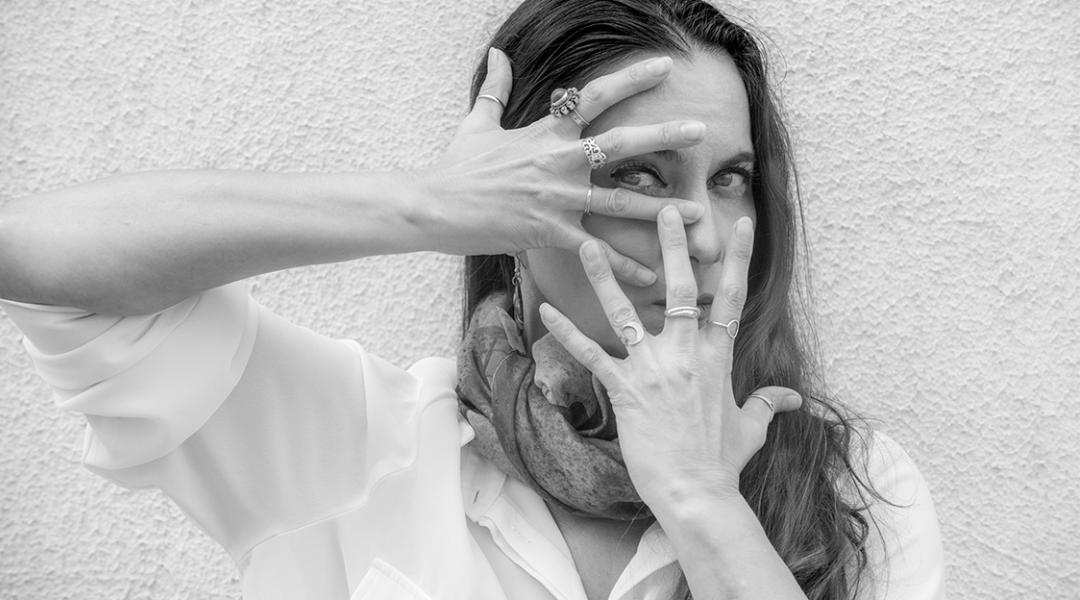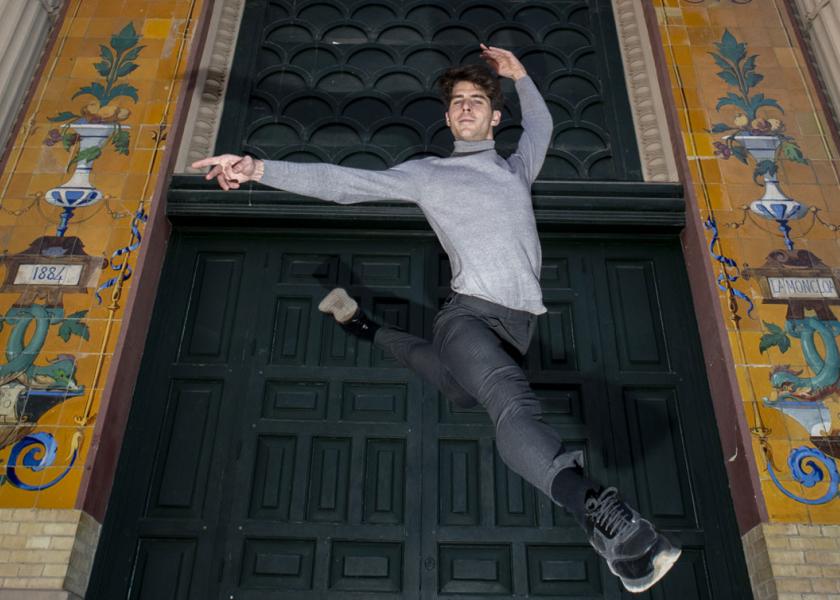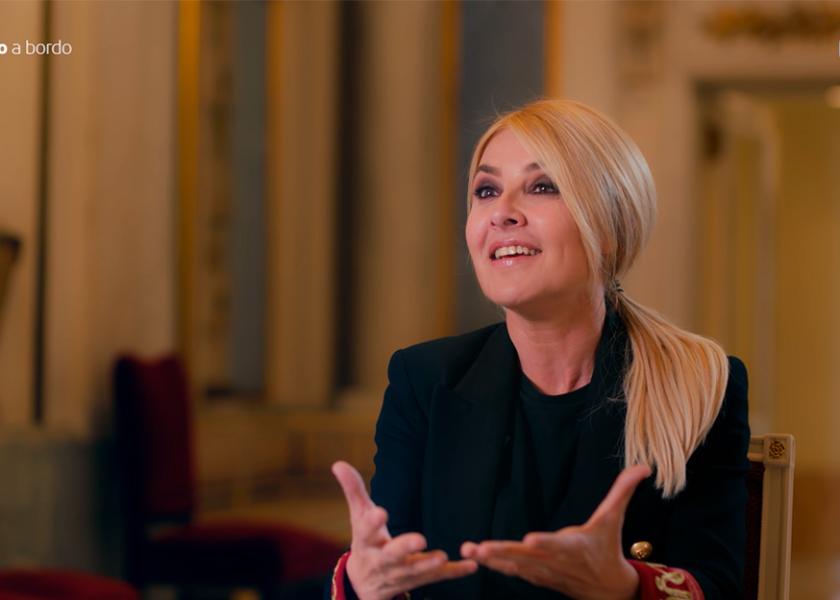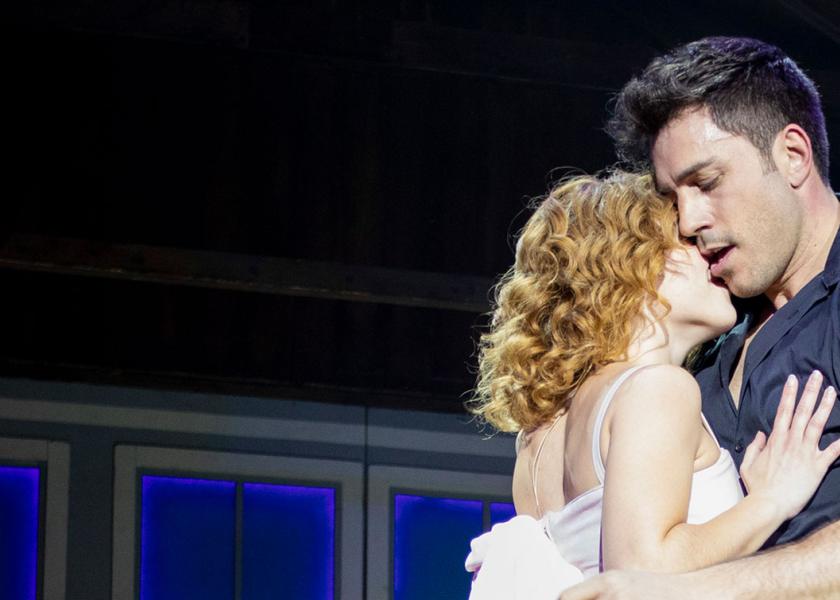Rafaela Carrasco
Flamenco legacy

Persevering to move forward. Moving forward to discover. And discovering to create. Following these steps, flamenco dancer Rafaela Carrasco has managed to offer her own vision of flamenco dance. In recognition of that legacy, in September she was awarded the 2023 Spanish National Dance Award. This Sevillian dancer’s desire to create is unstoppable and she’s already working on her next big performance: ‘Creaviva, pensamiento impaciente’ [Creaviva, impatient thought].
Rafaela Carrasco (Tomares, 1972) has dedicated 35 years to creating unique performances, constantly seeking to reinvent the discipline of her life: flamenco. Her love story with dance cannot be explained without her constant and ardent passion for going one step further. Her extensive career has turned her into a role model within this Spanish dance genre, inspiring upcoming flamenco dancers who dream of working by her side and setting new trends within flamenco dance. After founding her own company in 2002, she was the director of the Andalusian Flamenco Ballet from 2013 to 2016 and is now professor of Flamenco Dance at the Conservatory of Dance María de Ávila in Madrid. At the end of 2023, the Ministry of Culture and Sports recognised her legacy by granting her the Spanish National Dance Award in the Creation category.
Where did your passion for dance come from?
I started to dance when I was six years old at an academy in Tomares, a little village in Sevilla, and that’s when I got hooked. When I was eight, I got into the Matilde Coral Dance School in Sevilla, which is really well-regarded within the world of flamenco, and I studied classical Spanish dance and flamenco there. When I was seventeen, I joined the Flamenco Mario Maya Company, and the rest is history.
During your training, who were your role models?
Even though I’m not from a family of artists, flamenco has always been very present at home. So, my parents were my first role models. Professionally, I’ve had two teachers: Matilde Coral and Mario Maya. Matilde taught me to dance, she showed me the foundations of flamenco and shared her love for this art with me. And Mario taught me everything in terms of the stage. He opened me up to a world of knowledge: the secrets of the theatre, the stage, and choreography.
“Dance is granted very little space on theatre programmes in this country [...] and there are very few opportunities for young people. They don’t have the space to offer and show off their work”
Now, you’re the role model. What advice would you give this new generation of flamenco dancers who dream of making a living out of dancing?
I have students that are already becoming professionals and I always tell them something that has been a guiding principle throughout my life: you need to set yourself small goals and work towards them to achieve a long-term goal. This is a long-distance race. If you're really passionate about this, you’ll withstand the long haul. The key is having the training, passion, and perseverance.
What impact do you think you’ve had on Spanish dance?
During my 35-year career, I’ve worked as a teacher, dancer, and creator. I constantly alternate between those three roles, but I think that the place where I’m leaving a legacy —or a personal way of seeing flamenco creation— is in my choreographies. I’ve always wanted to offer a different personal vision of the choreographic creation of flamenco, and I believe that’s where I’ve managed to provide a different line of work and personal aesthetic.
More than once you’ve revealed that, in traditional flamenco, the essence of the artists is individuality. Does the creative process consist of managing to distinguish yourself from the rest?
Traditional flamenco is an extremely individual art. It comes from personal interpretation and it’s important to have a distinguishing personality, to have a story to tell. When I started creating, I had the urge to offer a different concept of choreography than what I’d experienced. I’ve always loved contemporary dance, not just because of its movement, but also because of its stage concept: how to use space through the bodies that inhabit it. I’ve tried to convey this in my creations using the vocabulary of flamenco. This has been my quest and what has distinguished my creative process.
![Rafaela Carrasco is already working on her next performance: ‘Creaviva, pensamiento impaciente’ [Creaviva, impatient thought]](/sites/default/files/styles/carousel_content_l/public/2024-01/02-RAFAELA-CARRASCO.jpg?itok=0QcQ4tMZ)
Rafaela Carrasco is already working on her next performance: ‘Creaviva, pensamiento impaciente’ [Creaviva, impatient thought]. © Miguel Garrote Rodriguez
When you’re on-stage, what do you feel and what would you like to convey to the audience?
I try to be as honest as possible with the work I’m doing in that moment. Throughout your artistic career, your different life stages are reflected in your works. And that only happens if, as I was saying, you are honest with your work. It also makes it easier for the audience to connect with that journey of an hour and fifteen minutes that you take them on. When you achieve this, it’s like reaching the stars (laughs).
“Flamenco is still alive because it has the ability to adapt, pick things from other disciplines and make them its own without losing its identity”
In the world of dance in Spain, would we be right in saying that there’s more talent than opportunities?
Absolutely. Dance is granted very little space on theatre programmes in this country. In terms of flamenco, it only happens at particular festivals. Theatre programmes maybe have two dance companies a year and different dance genres have to fight for them. There are very few opportunities for young people. They don’t have the space to offer and show off their work.
Despite this lack of opportunities, is flamenco dance still alive and well?
Flamenco is still alive because it has the ability to adapt, pick things from other disciplines and make them its own without losing its identity. It’s the most avant-garde art form in the world, it’s constantly evolving. We should also keep in mind that flamenco is a very emotional discipline. You don’t need to understand flamenco to enjoy it, you just need to sit back, watch, and let yourself go. That’s what has helped it stand the test of time.
“Talent needs to be ready to make the most of the opportunity. It’s no use without hard work and perseverance”
You've received the 2023 Spanish National Dance Award in the Creation category. What role do you think talent has played in this recognition?
Talent needs to be ready to make the most of the opportunity. That is, it’s no use without hard work and perseverance. Some people don’t have the ability to put in the daily work, and their talent is squandered. The opposite is also true, even if you’re incredibly determined, you need a touch of talent to make the whole. Talent and perseverance must go hand in hand; I believe that synergy has been fundamental in receiving the award.
We know you’re preparing your next project: Creaviva, pensamiento impaciente [Creaviva, impatient thought]. How do you face this new challenge? What can you tell us about it?
It’s something quite different for me. I always work with company and this time I will be alone with musicians. I want to work on the solitude of the creator, I want to show the depth of those hours and hours of solitude and study in search for something. Creaviva invites the audience to travel inwards and is based on the muses of creation.


